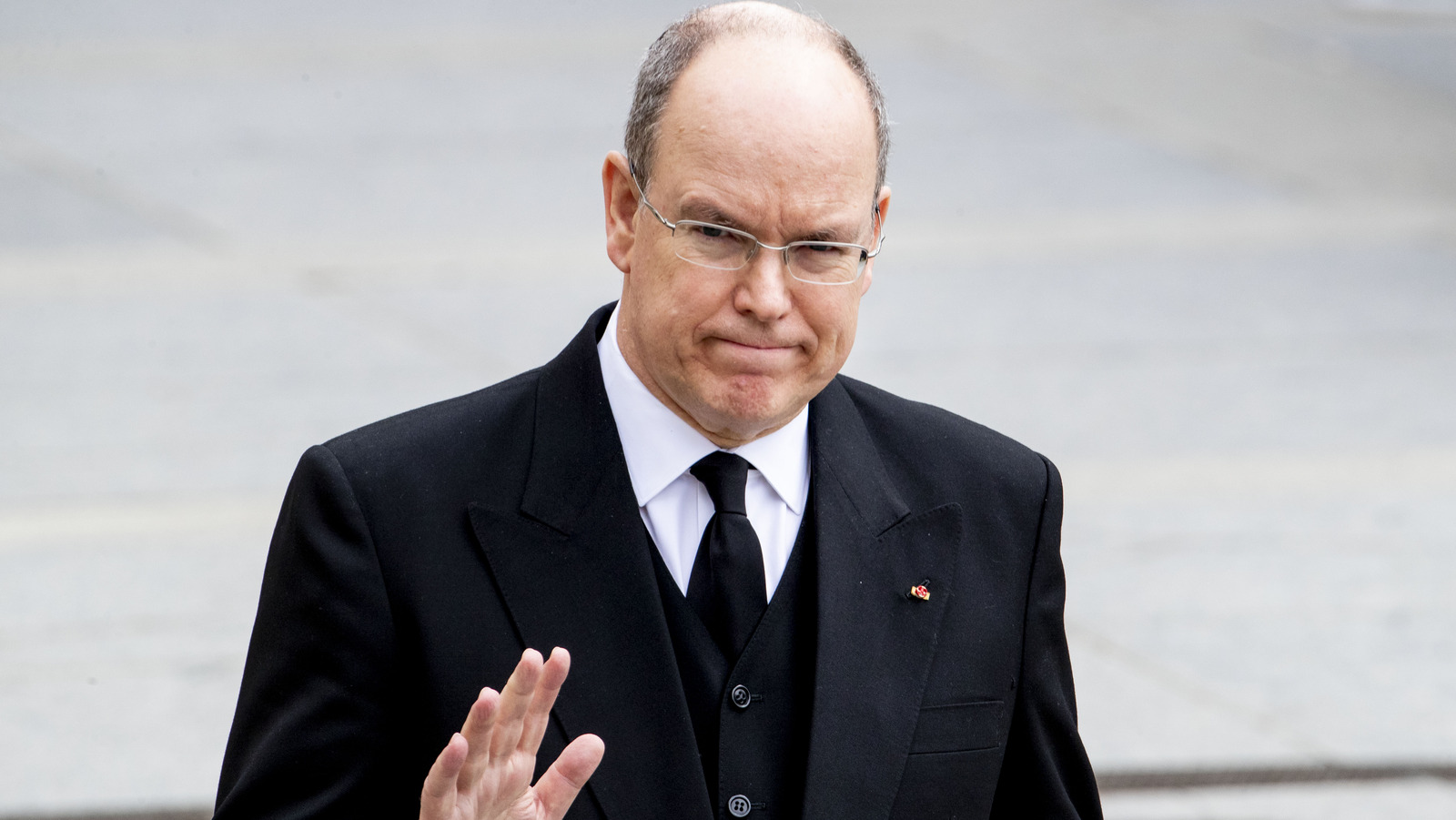Physical Address
304 North Cardinal St.
Dorchester Center, MA 02124
Physical Address
304 North Cardinal St.
Dorchester Center, MA 02124

Prince Albert is one of the most controversial royal figures of his day, and it’s no wonder why. The sovereign prince of Monaco has a number of outstanding legal troubles, rumored marital problems, and even a brood of royal love children. His ex-girlfriend, Nicole Coste, has publicly complained about his behavior on multiple occasions. A Brazilian child has written him an open letter, asking him why he refuses to claim paternity of her. And, how could we forget his wife, Princess Charlene, who has reportedly ditched the palace for a simpler life in a two-bedroom apartment down the street?
It might seem that Albert’s life has been defined by scandal, but his missteps don’t tell the full story. The Monégasque head of state is no stranger to tragedy. As a small child, Albert faced a considerable amount of pressure due to the weight of his destiny as the heir to the principality. When he grew up, he struggled even more due to the shocking loss of his mother, American Academy Award winning actor, Grace Kelly. As privileged as Albert may be, the accumulation of these stressors — and tragedies — has left an indelible mark on his personality and role as sovereign.
In some ways, Prince Albert’s childhood sounds like a fairy tale. He grew up prancing around the historic Prince’s Palace of Monaco, where the world was quite literally his oyster. In the BBC documentary, “Inside Monaco: Playground of the Rich,” Albert remembered trying to slide down the palace’s bannisters during his younger years. “There were several attempts at sliding down, but those marble elements got in the way of that,” he joked (via Express).
While the young Albert did have the unique experience of frolicking in a castle, there was a darker side to his childhood. The prince faced a tremendous amount of pressure due to his status as the heir to the Monégasque monarchy. Even when he was small, Albert dared not dream of anything other than his destiny.
According to his father, Prince Rainier III, Albert understood his role from the time he was toddler. As per Jeffrey Robinson’s book, “Grace of Monaco: The True Story,” Rainier said, “When Albert was five or six, he was sitting with a group of children who were each in turn asked by an old lady, ‘What would you like to do when you grow up?'” Apparently, all of the other kids blurted a number of typical responses, imagining themselves as local heroes like firefighters and police officers. Albert, meanwhile, had a different answer. “I don’t have a choice,” Albert reportedly said.
As Prince Albert grew older, his life only became more challenging. This was especially true after his mother, the iconic Grace Kelly, drove off a cliff in a 1982 car accident. Following this terrifying incident, Grace was rushed to the hospital. However, she experienced so much hemorrhaging in her brain that her survival became unlikely.
Reflecting on this terrible experience in an interview with biographer Jeffrey Robinson, Prince Rainier III recounted how he and his two eldest children made the difficult decision to take Grace off of life support. “We had a long talk with [the doctor]. He was an extremely nice man and very understanding with us … He showed us the pictures and helped us to understand in a very clear way that the machine should be turned off,” Rainier said.
Apparently, Rainier, Albert, and Princess Caroline took a minute to discuss the decision together. Once they had all agreed on the course of action, the trio approached Grace’s bedside to say a heartbreaking goodbye. “It was a difficult decision sentimentally,” Rainier would later tell Robinson. “But, from a rational, human standpoint it was an obvious decision. There was no reason to keep her on the machine.” When the mourning father and his two children gave the signal, Grace’s doctor removed the life support, and the princess died. Albert was left heartbroken.
Following Grace Kelly’s tragic death, the Monégasque royal family was never the same again. Prince Albert’s younger sister Princess Stéphanie arguably became Monaco’s most troubled royal. After all, she had been with her mother in the car at the time of the accident — and was consequently admonished by the press for what some viewed as her “role” in Grace’s passing.
Prince Rainier, too, struggled terribly after his wife died. “He was deeply affected and he wasn’t quite the same man as he was before the accident,” Albert remembered in an episode of the podcast “In Depth With Graham Bensinger” in 2018. In that sense, Albert did not just have to deal with the loss of his mother. He also had to face a number of other changes to what had previously been a stable family unit. No longer was his father the doting family man that he had been before. Rainier grew solemn and more withdrawn.
All these changes made it difficult for Albert to move on from the tragedy. Speaking to Bensinger, Albert admitted that it took a long time for him to really accept what had happened. “It always takes awhile, you recover thanks to your other family members and to your friends and to people who are dear to you who can provide comfort. It also takes a few years to really come to terms with it,” Albert said.
Of course, just because some of Prince Albert’s friends supported him in a difficult time does not mean that he exclusively surrounded himself with “true friends.” Due to his position as Monaco’s heir, the young Albert often found that the people closest to him had ulterior motives. Many of his so-called “buddies” spent time with him to get a brush with fame. Others yet hoped to enjoy some of the privileges that only a prince could provide.
Chatting with biographer Jeffrey Robinson for “Grace of Monaco: The True Story,” Prince Rainier said about the issue, “He’s discovering, as I did, that it’s not always easy knowing who to trust. Albert’s had to learn the hard way that some fellows who’ve been seen around with him were really only interested in what he could do for them. That it was a one-way street.”
Eventually, Albert decided to keep his identity under wraps when possible. During his time studying at Amherst College in the United States, Albert made a point of introducing himself to other students as “Al Grimaldi.” When J. Randy Taraborrelli was researching for his book, “Once Upon a Time: Behind the Fairy Tale of Princess Grace and Prince Rainier,” one of Albert’s college girlfriends revealed that she’d gone months without knowing he was a prince. Apparently, Albert had wanted to be liked for his personality — not his rank.
Prince Albert’s rank was not always as guaranteed as one would think — at least that’s according to a report in the French investigative newspaper, Le Monde. Apparently, Prince Rainier III was not always confident in Albert’s ability to succeed him. According to Albert’s former friends and employees, Claude Palmero and Thierry Lacoste, Rainier believed that his only son potentially lacked the seriousness necessary to be prince of the city-state. Speaking to Le Monde, Palmero and Lacoste alleged that Rainier actually explored the possibility of allowing the crown to pass through his daughter Princess Caroline down to his grandson, Andrea Casiraghi.
Interestingly, Palmero and Lacoste submitted evidence of their claims to the paper. Per a letter from former Monégasque magistrate, Patrice Davos, to Rainier, there had been a discussion regarding the matter of Andrea’s rights to the throne. That being said, Davos was quick to tell journalists that the conversation had been purely speculative. Although the magistrate himself had questioned Rainier’s true motives for initiating that conversation, the late prince had apparently reassured him that he had no plans to deny Albert his birthright.
In the end, Rainier allowed his son to succeed him following his death. Nonetheless, the rumors surrounding Rainier and Albert’s difficult relationship live on.



